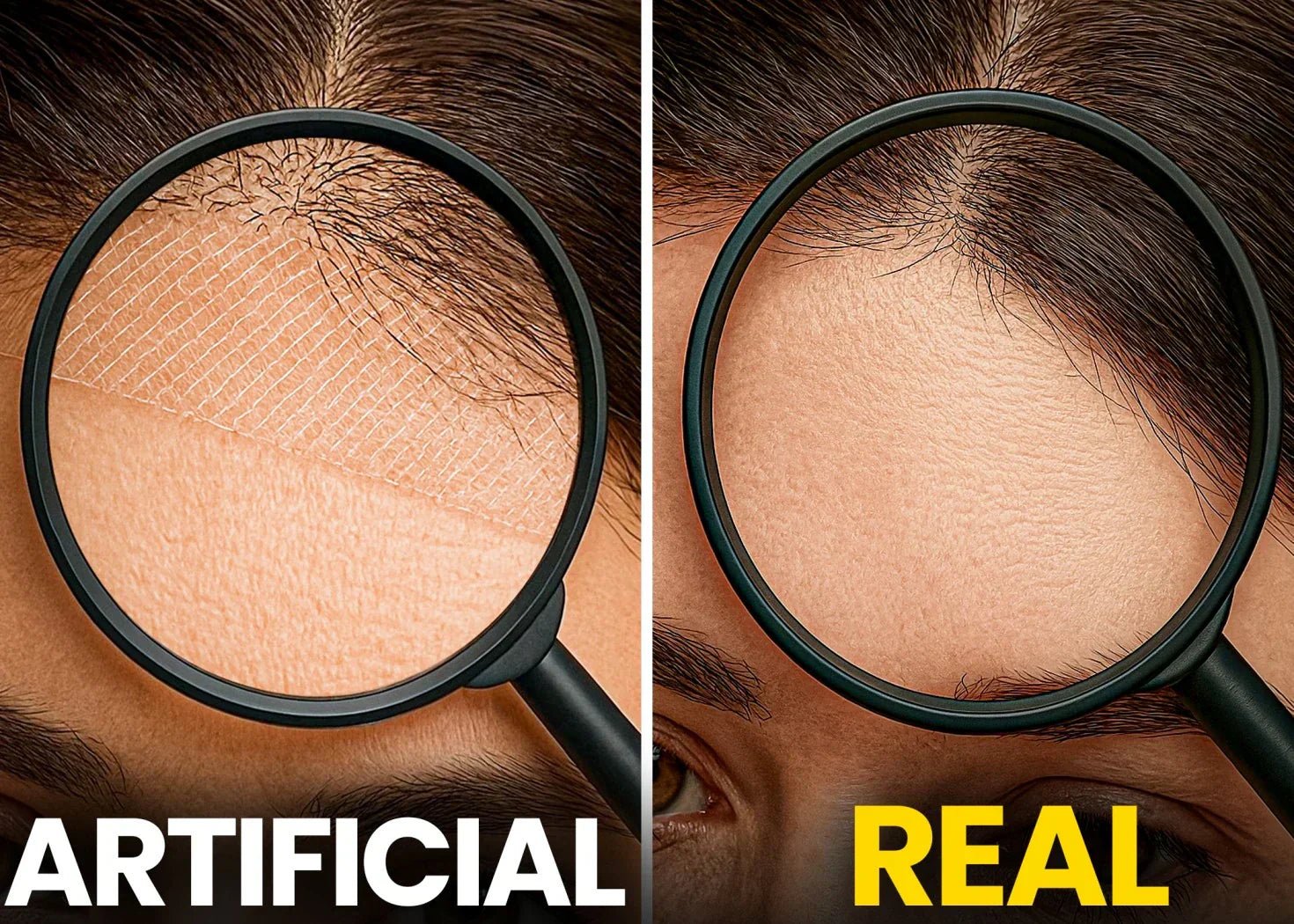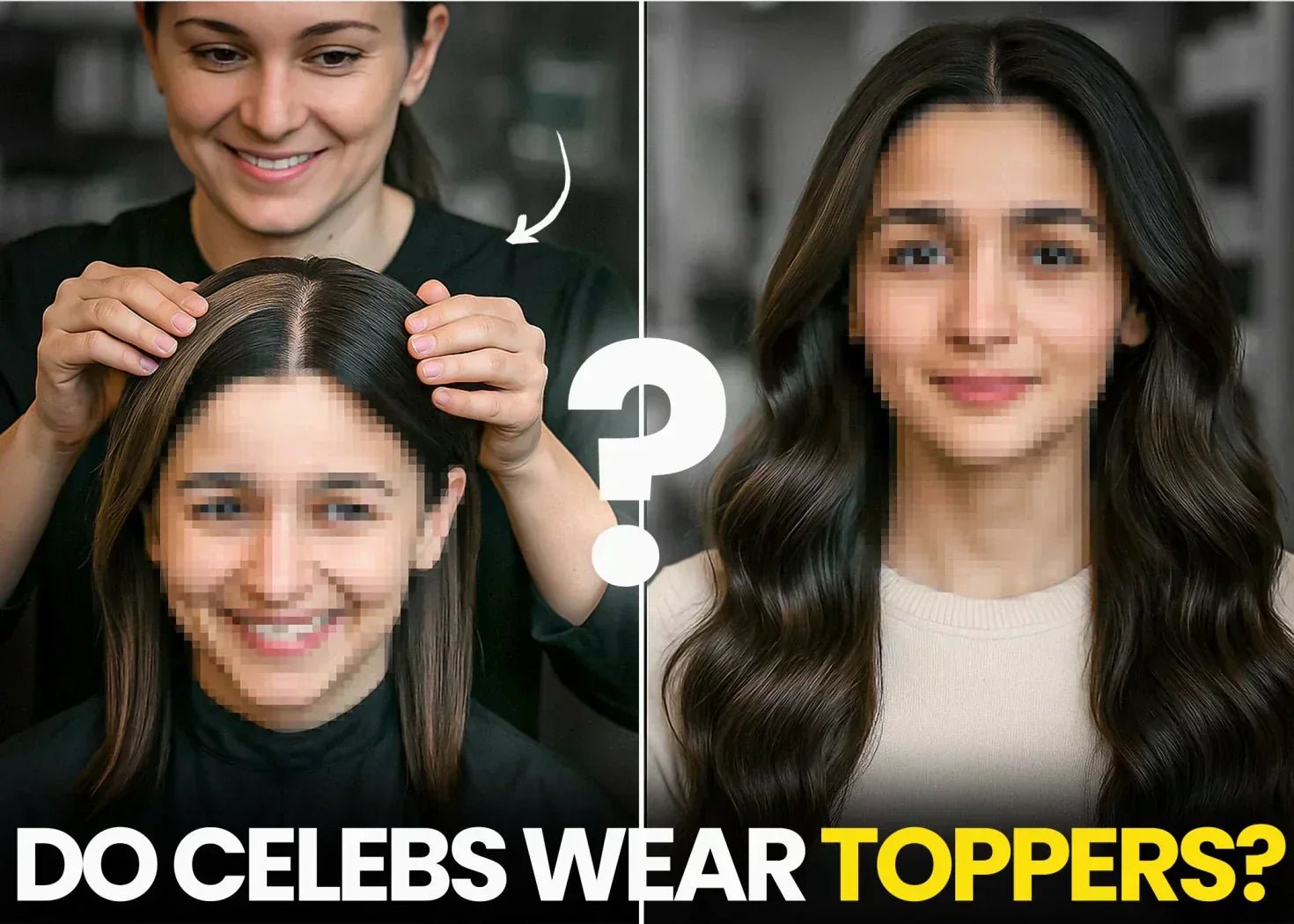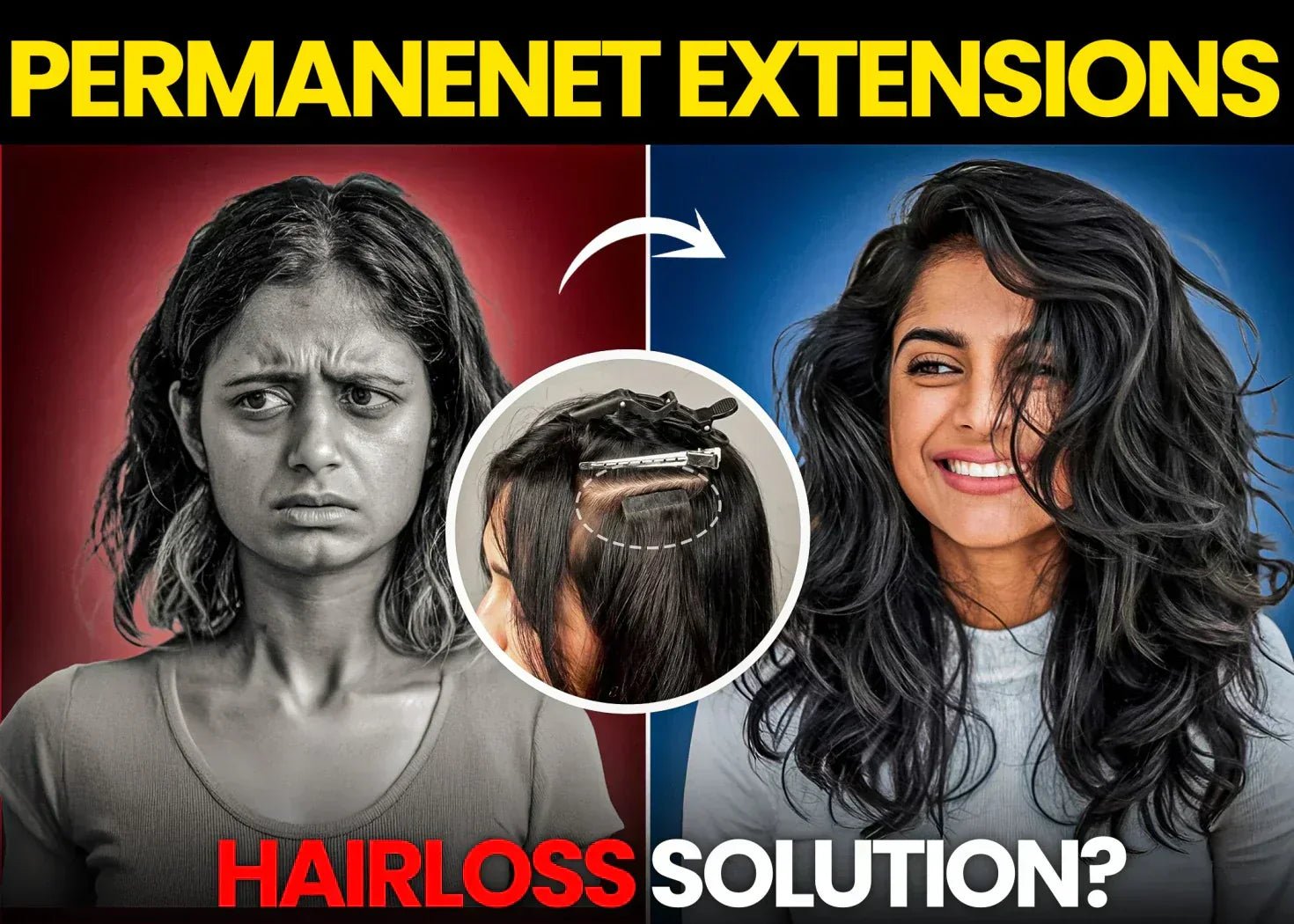Real or Fake? Take This Wig Test and See If You Can Tell!

Hair loss from cancer treatments like chemotherapy and radiation is one of the most emotional aspects of the journey. For many women, the mirror becomes a painful reminder of everything they're going through. In such times, a natural-looking wig does more than cover hair loss; it restores confidence, preserves identity, and brings a touch of normalcy to an otherwise unpredictable time.
But let’s face it, nobody wants a wig that looks like a wig. You want it to be so flawless, so seamless, that even your closest friends can’t tell. That’s where this article comes in. We’re putting you to the test: Can you spot a fake wig from a real one? And more importantly can you avoid buying the wrong one?
This fun-yet-informative article walks you through the telltale signs of a premium wig, the differences you should watch out for, and how to pick one that truly looks and feels like you.
|
Table of Contents |
| Importance of Wigs |
| How to Tell if It’s a Wig |
| Key Features of Wig |
| The Wig Test: Real or Fake? |
| Wigs for Cancer Patients |
| Choosing the Right Wig |
| Wig Care Tips |
Understanding the Importance of Natural-Looking Wigs
Why does the hairline matter so much? Because it’s the first thing people see. If the lace front isn’t sitting right or the density looks off, people will notice. For women facing hair loss due to cancer treatments, this is more than aesthetics, it's emotional security.
Natural-looking wigs offer:
- A confidence boost when you look in the mirror
- Discretion in public, helping you avoid awkward questions or pitying looks
- Emotional strength, reminding you that you’re still you despite what’s happening underneath the wig
How to Tell if It’s a Wig: The Ultimate Wig Test
Here’s a simple quiz to see if you or anyone else can tell the difference between real hair and a premium cancer wig. Ready?
Wig Test Questions:
Hairline Check: Does the hairline have a natural irregularity, or is it unnaturally straight and thick?
- Real human hair wigs have lace fronts or monofilament caps that mimic real scalp texture.
Parting Realness: Can you see a “scalp” through the parting, or does it look like a fabric base?
- Best wigs for cancer patients are designed with realistic parting spaces that resemble your scalp.
Hair Movement: Does the hair fall naturally, or does it seem stiff and synthetic?
- Human hair cancer wigs flow and bounce just like your own hair.
Shine Factor: Is the shine subtle or unnaturally glossy?
- Synthetic wigs often have excessive shine that gives them away under light.
Blend Match: Does the wig match your skin tone, face shape, and previous hair texture?
- Custom wigs for cancer patients are designed to suit your individual look.
If you said “real hair” to most of the questions above and it was actually a wig you’ve experienced the power of a premium, natural looking wig.
Key Features That Define a High-Quality Wig
Features to Look for When Buying a Wig? Here’s what truly sets the best ones apart:
- Hair Type: Premium wigs use 100% Remy human hair, which mimics the natural flow, bounce, and texture of real hair. Remy hair also ensures all cuticles are aligned in the same direction, reducing tangling and increasing longevity. It can be styled, curled, straightened, and even coloured just like your natural hair.
- Lace Front Design: A lace front gives the illusion of a natural hairline and allows for off-the-face styling. Look for hand-tied lace with baby hairs, which softens the transition from forehead to hair and enhances realism, especially under bright lights or in close-up interactions.
- Parting Versatility: The best wigs offer free parting, meaning you can change your hairstyle without revealing wig tracks or seams. This makes the wig feel more like your own hair, giving you the flexibility to create middle, side, or even zigzag parts based on your mood or face shape.
- Breathable Cap: Lightweight mesh or monofilament caps are designed to allow air circulation, which is crucial during cancer treatments when the scalp may be extra sensitive. These caps prevent sweating, irritation, and discomfort while maintaining a snug yet breathable fit.
- Custom Fit: Adjustable straps and inner clips ensure the wig stays in place throughout the day. A custom fit means no slipping, shifting, or constantly readjusting your wig even during busy days, windy weather, or while resting. It also provides psychological peace of mind.
The Wig Test: Real or Fake Let’s Break It Down
Still unsure how to spot a wig that truly looks natural? Let’s break it down into five simple checks you can do whether online or in-store to separate the real deals from the obvious fakes:
1. The Hairline Illusion
Run your fingers along the front. Does it mimic how hair naturally grows out of the scalp? Lace fronts with baby hairs create a soft, seamless transition that even close friends won’t detect.
2. The Shine Test
Natural human hair has a subtle, healthy sheen not a glassy, plastic shine. If the wig reflects too much light, it’s likely synthetic and won’t blend naturally in sunlight or camera flashes.
3. Flexibility of Styling
A premium wig lets you experiment with middle parts, side sweeps, and even gentle curls. If the wig is stiff or stuck in one style, it’s probably not made for real-life wear.
4. Breathability Check
Especially during treatment, your scalp needs comfort. Look for mesh or mono caps that allow airflow while remaining soft on sensitive skin.
5. Grip Without the Squeeze
A good wig stays in place without causing discomfort. Adjustable straps and soft lining help create a secure yet gentle fit that doesn’t need constant fixing.
When a wig passes these five checkpoints, it’s not just wearable, it's confidence you can put on daily.
Real vs Fake Wig: Know the Difference
Feature |
Real Wig (Human Hair) |
Fake Wig (Synthetic Hair) |
| Hair Material | 100% Remy human hair | Plastic-based synthetic fibers |
| Look & Shine | Natural shine like real hair | Unnatural plastic-like shine under light |
| Touch & Feel | Soft, smooth, and realistic texture | Coarse or too silky, artificial feel |
| Parting Options | Can be parted in any direction | Fixed parting, usually center |
| Styling Flexibility | Can be curled, straightened, or colored | Heat styling usually not allowed |
| Lace Front & Hairline | Seamless lace front with baby hairs | No lace or visible thick hairline |
| Cap Construction | Breathable, adjustable, and skin-friendly | Often tight, itchy, and less breathable |
| Durability | 6–18 months with proper care | 1–3 months before frizz or tangling starts |
| Blending with Skin | Blends naturally with scalp and hairline | Difficult to blend—may appear lifted or artificial |
| Cost | Higher investment, but worth it for the quality | Cheaper upfront, but needs frequent replacement |
| Comfort | Lightweight, comfortable for all-day wear | Can feel heavy or itchy after long hours |
| Maintenance | Requires regular washing, conditioning, and care | Low maintenance, but short lifespan |
Tips for Choosing the Perfect Wig for Cancer Patients
Choosing a wig while going through cancer treatment isn’t just about beauty—it’s about reclaiming your identity. Keep these things in mind:
- Start Early: Shop for a wig before you lose all your hair. That way, you can match the color and style to your natural look.
- Ask for Trials: A good wig studio will let you try on styles and offer consultations tailored to cancer-related hair loss.
- Consider Lifestyle: Choose a wig that matches your daily needs whether you’re working, attending events, or resting at home.
- Look for Customization: The best wigs can be cut, colored, and styled to suit your face shape and skin tone.
- Don’t Compromise on Comfort: With sensitive skin, itchiness and sweating can become a problem. Choose a wig made for long wear.
Maintaining Your Wig for Longevity and Natural Appearance
Your wig deserves as much love as your natural hair. With the right routine, you can keep it looking fresh, soft, and flawless for a long time. Here’s how to care for it:
1. Wash Weekly
Use a sulfate-free, paraben-free shampoo and cold or lukewarm water to gently cleanse the hair. Always detangle before washing, and use downward strokes to avoid breakage.
2. Air Dry Only
Let your wig air dry naturally on a mannequin or wig stand. Avoid blow-drying or direct sunlight. If the wig is heat-resistant, use low heat with a protectant spray.
3. Store Smart
Keep your wig on a wig stand or mannequin head when not in use to maintain its shape, prevent tangling, and reduce wear on the cap.
4. Use Light Products
Avoid heavy oils or sticky serums. Use lightweight, alcohol-free sprays or leave-in conditioners made specifically for wigs.
5. Detangle Gently
Use a wide-tooth comb or wig brush to detangle, starting from the ends and working up. Avoid brushing when wet, as it weakens the hair fibers.
6. Avoid Sleeping or Showering with It
Sleeping in your wig can cause tangling and cap damage. Always remove your wig before bed or bathing, unless you’re wearing a special sleep cap.
7. Protect from Friction
Minimize friction from scarves, collars, or pillows. Friction causes frizz and breakage, especially at the nape area. Use silk or satin pillowcases if you must lie down briefly while wearing the wig.
8. Limit Heat Styling
Even with human hair wigs, excessive heat leads to dryness and split ends. Use styling tools sparingly and always apply heat protectant before curling or straightening.
9. Refresh the Ends Regularly
The ends of the wig are prone to dryness. Trim them slightly every few months to keep the look healthy and natural.
10. Deep Condition Occasionally
For human hair wigs, apply a deep conditioning treatment every few weeks to keep strands soft, especially if heat styling is frequent.
With proper care and a little patience, your high-quality wig can last 6 months to over a year, maintaining its natural texture, shine, and comfort.
Conclusion
Hair loss during cancer treatment can feel like a personal battle but the right wig can help you take back control. From realistic hairlines to breathable caps and customizable styles, choosing a premium wig means choosing yourself. You deserve to feel beautiful, confident, and in charge no matter what stage of your journey you’re in.
Ready to take the real wig test? Visit a trusted studio, ask questions, and never settle for less than what makes you feel like you.
How to navigate hair loss during cancer treatment with style? It starts with understanding your options and finding a solution that blends comfort with confidence. A high-quality wig isn’t just about looks it’s about how it makes you feel.
Ready to take the real wig test?
Visit a trusted studio, ask questions, and never settle for less than what makes you feel like you.
Call us 📞+91 9967123333 today for personalized guidance on hair loss solutions! Let our experts help you discover what works best for your unique needs and goals. Don’t wait take the first step toward your perfect hair solution now!
need help?






Leave a comment
This site is protected by hCaptcha and the hCaptcha Privacy Policy and Terms of Service apply.